
Posted by DESIGN Cebu Admin
November 15, 2021
THE PHILIPPINE CREATIVE CITIES NETWORK
The Future of Cities is Creative
By Butch Carungay, November 13, 2021
Over the last year and a half, we have had the privilege to work with the Arts, Culture and Creative Industries Bloc (ACCIB) of the 18th Congress of the Philippines under the Chairmanship of the Hon. Christopher de Venecia. During one of the virtual hearings in April 2021, we were asked to present a status update on the developments in Cebu as well as a wish list on how to catalyze the Creative City movement in the Philippines. On top of that wish list was the formation of the Philippine Creative Cities Network (PCCN).
Little did we know then that what began as a mere suggestion would fast become a reality. With the overwhelming support of the League of Cities of the Philippines, ACCIB, Design Center of the Philippines, Stages Productions, PLDT/Smart and numerous other stakeholders, the PCCN had an initial launch in July 2020 with a larger follow up event in October.
The PCCN is meant to be a support group, incubator and accelerator for cites that strongly believe that creativity is a major component for achieving long term sustainability in the economic, social and environmental spheres. To date, nearly thirty city mayors have signified their intent by signing the PCCN Creative Manifesto which encapsulates what this movement is about:
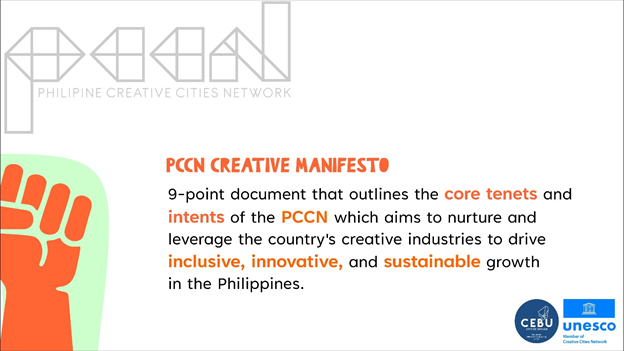
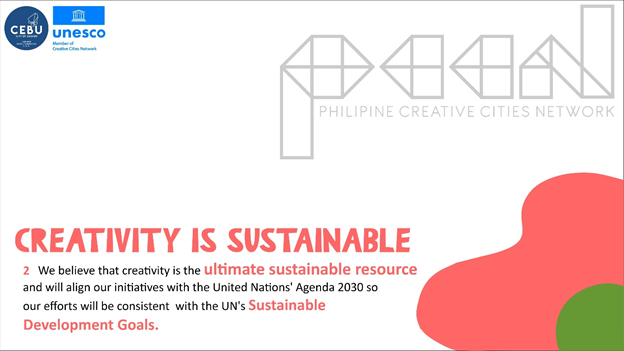
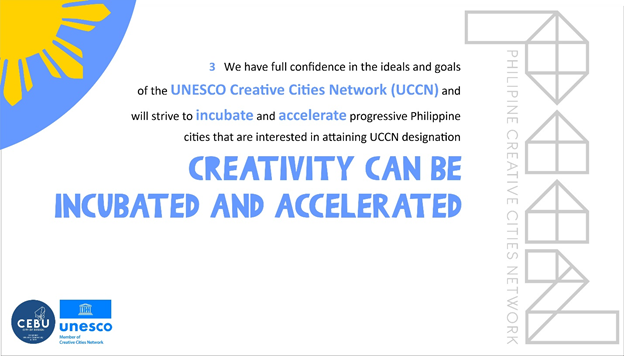
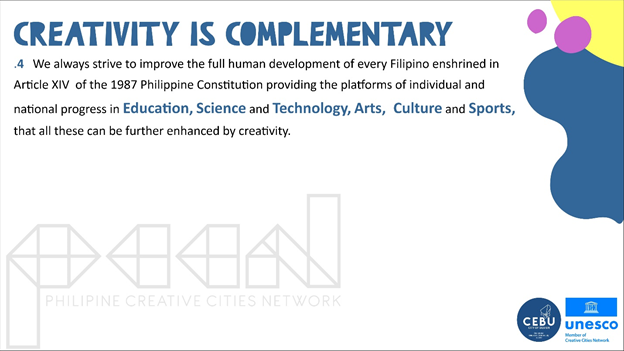
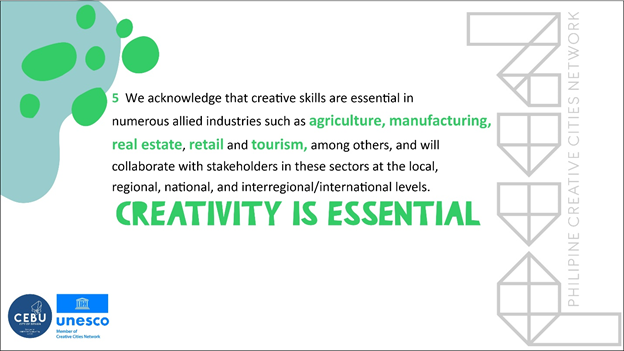
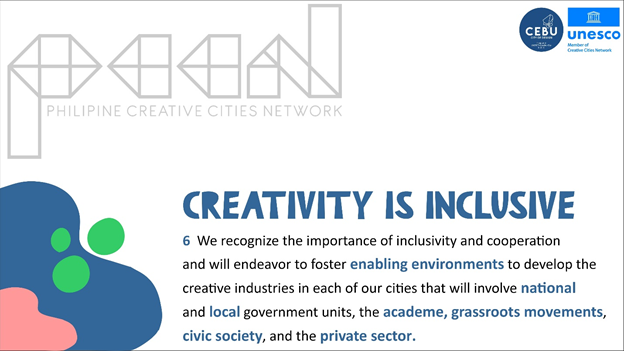
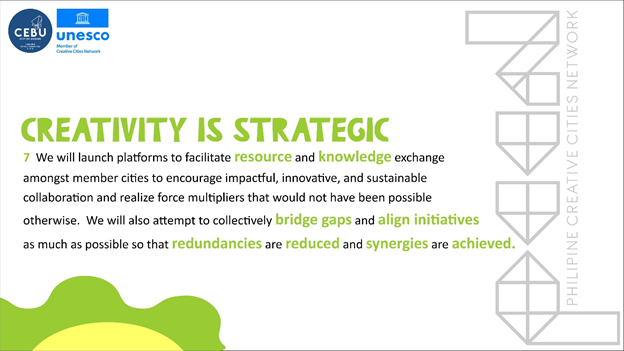
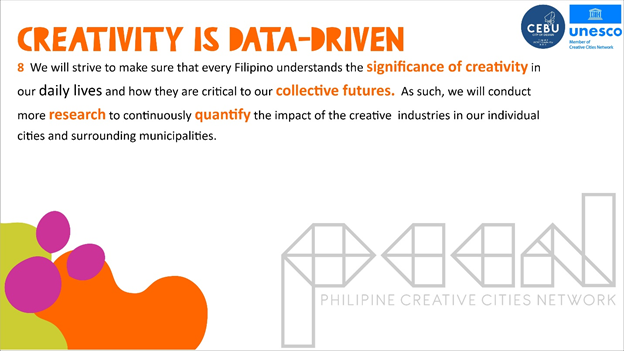
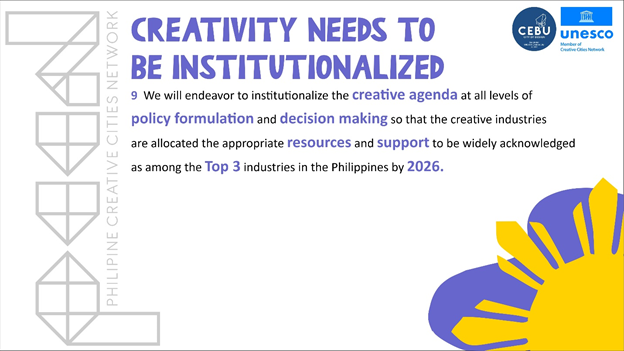
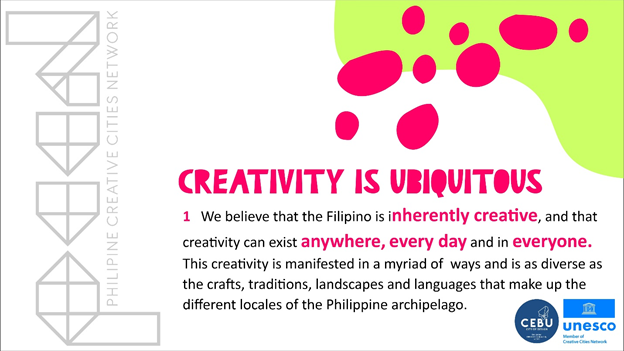
The PCCN is still in its nascent stages but we will continuously update the DCG as more developments happen.
